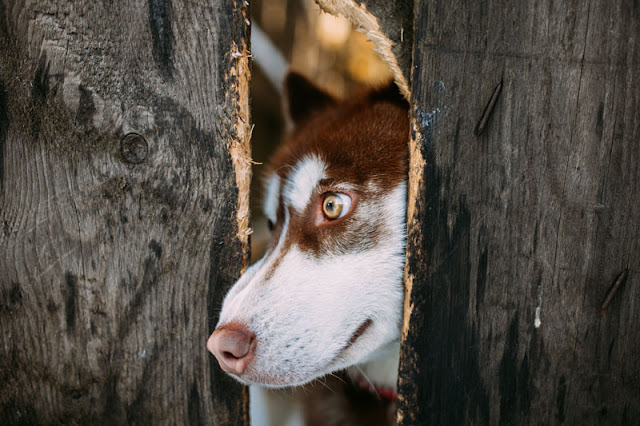Can Cats and Coyotes Co-Exist?
What happens when cats and coyotes inhabit the same area?
In parts of north America, some people keep their cats
indoors because of the risk of predation by coyotes. Outdoors cats must
co-exist with them, if they can. Yet very little is known about the risk to
cats from coyotes, and the extent to which populations overlap. A fascinating
study of free-roaming cats in Chicago (Gehrt et al 2013) provides answers to
these questions.
Cats that were considered ‘feral’ were sedated, weighed, measured, and blood samples were taken to test for four infectious diseases: feline leukaemia (FeLV), FIV, feline heartworm, and toxoplasma gondii. Then they were fitted with radio collars and released in the evening, after they had come round from the sedative.
Chicago is one of the largest cities in north America with a
human population of over 8 million. The study took place from 2008 to 2010 at
various locations in the northwestern suburbs, including public parks,
conservation areas, and a private wildlife reserve. The research team were
already collecting data on coyotes in this area, making it the perfect location
for a study of how cats manage to co-exist with coyotes.
Free-roaming cats, rather than pet cats, were the focus.
Traps, baited with canned cat food, were set up at the study locations and
checked at least once, usually twice, a day. One of the sites was close to a
cat colony, where a local Trap Neuter and Return group kept an eye on the cats.
Any cats that appeared to be owned – for example, because they were in
excellent condition, or wearing a collar – were released and excluded from the
study.
Cats that were considered ‘feral’ were sedated, weighed, measured, and blood samples were taken to test for four infectious diseases: feline leukaemia (FeLV), FIV, feline heartworm, and toxoplasma gondii. Then they were fitted with radio collars and released in the evening, after they had come round from the sedative.
The scientists tracked the cats at night using the
radio-collars. This is the time of day that free-ranging cats are most active
(although we know that owned cats adapt their routines to those of their owners).
Forty-three cats were captured for the study, almost all of them adults,
and an equal number of males and females.
Most of the cats were of reproductive status, with five of
the females being pregnant or lactating, and three other females having
recently had kittens. 21% of male and
28% of female cats were sterilized, and these were mostly found near the site
where the TNR group maintained a colony. The researchers did not sterilize any
of the cats themselves, just in case any turned out to be owned cats.
Tests for disease found the cats were very healthy, with few
getting positive results for the four infections. However, more than half had
been exposed to Toxoplasma gondii at some point. This is higher than found in
studies in other parts of the US. Other wildlife in the Chicago area was also
found to have a high rate of T gondii exposure, including raccoons, skunks and
coyotes.
Thirty-nine of the cats were fitted with radio-collars. It
is sad to note that 20% of them (eight cats) died during the course of the
study, although this is actually a much better survival rate than the
scientists expected. Three were apparently killed by coyotes, two died after
being hit by a vehicle, one died of disease, and it wasn’t possible to
determine the cause of death of the other two deceased cats.
Another surprising finding is that almost a quarter of the
cats were kidnapped, “removed from the system by cat advocates” who were
opposed to the study. It is not clear what happened to these cats. Another 28%
were legally adopted or removed, the transmitters expired for 13% of the cats,
and there was no data on the remaining ten per cent.
Data showing the range of cats and coyotes is fascinating. In
general the cats avoided the areas where the coyotes lived. While coyotes were
mainly found in woods and natural landscapes, the cats lived mostly in urban
landscapes. One single cat lived in an area surrounded by coyote habitat, and
this was one of the cats that was sadly predated by a coyote.
One important finding to be drawn from this is that studies
that estimate predation by feral cats probably overestimate it significantly if
they fail to take account of coyote distribution. This is because the coyotes
were living in the areas with most wildlife and the cats tended to stay in the
more urban areas, around people.
This study suggests that coyotes are the reason cats tended
to stay in urban landscapes, but it does not prove this is the reason. However,
the authors note that other studies in areas without coyotes, do find
free-roaming cats in natural landscapes.
This study shows that free-roaming cats are at risk from
predation by coyotes, and owned cats would also be at risk.
Are your cats
indoors-only or allowed outside, and do you have coyotes where you live?
Reference
Gehrt, S. D., Wilson, E. C., Brown, J.
L., & Anchor, C. (2013). Population ecology of free-roaming cats
and interference competition by coyotes in urban parks. PloS one, 8(9), e75718.





